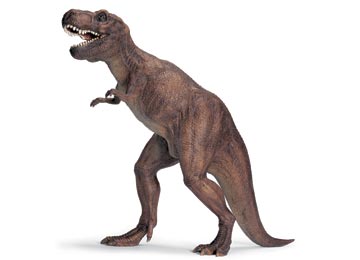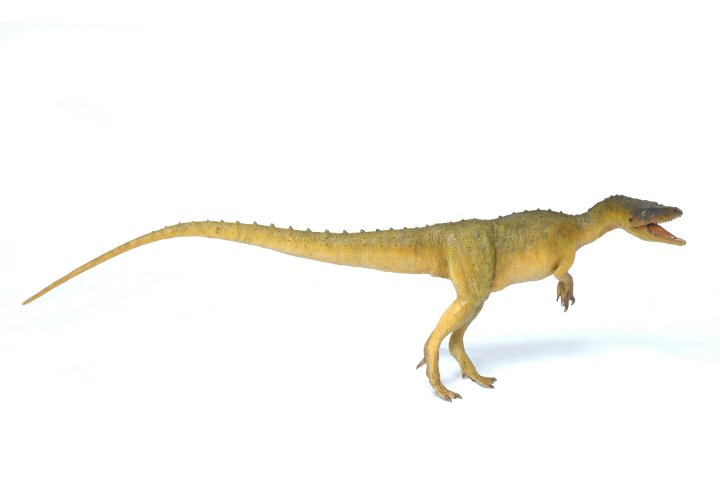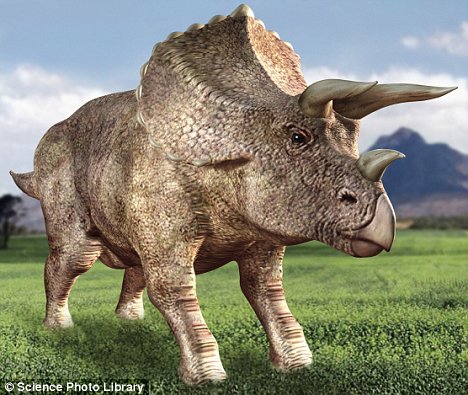TYRANNOSAURUS

Family: Tyrannosauridae
Discovery: North America
Habitat: Land
Time: Late Cretaceous
Facts: The Tyrannosaurus was a large and vicious carnivorous dinosaur that used it's sturdy low jaw and powerful teeth to hunt smaller dinosaurs. The Tyrannosaurus had a huge head and rather small forelimbs, however researches have speculated that their forelimbs were extremely powerful, capable of easily lifting up to 200kg. Amazing right? As you want to know the Tyrannosaurus run very fast to catch their prey.
COMPSOGNATHUS

Family: Compsognathus
Discovery: Europe
Habitat: Land
Time: Late Jurassic
Facts: The Compsognathus was a dinosaur of small stature its name even means 'dainty jaww'. It's body measured at 70 to 80 centimetres, with a weight of only 3000 grammes and a head of a 6 to 7 centimetres. It is thought to be an agile creature, and survived on a diet of insects and little animal.
SEISMOSAURUS

Family: Diplodocidae
Discovery: North America
Habitat: Land
Time: Late Jurassic
Facts: The Seismosaurus measured at 40 to 50 metres and weighted over 10 tonnes. It is currently as the longest dinosaur ever known to exist. It had a long neck like a giraffe but it has longger neck than the giraffe. The long neck allowed the Seismosaurus eat leaves in high places, and it's whip like tail could have been used as a weapon to fend off predators.
MUSSAURUS
Family: Plateosauridae
Discovery: Argentina
Habitat: Land
Time: Late Jurassic until Early Jurassic
Facts: At only 18cm long, it was perhaps the smallest dinosaur. To date, reaserchers have discovered Mussaurus nests consisting of 3 to 4 fossilised juvenile Mussaurus allowing us to understand better the growth and bone strutures changes in dinosaurs. The fossil are currently preserved in the Argentina Museum of Natural Sciences.
PTERANODON

Family: Pteranodontidae
Discovery: North America
Habitat: Coastal areas
Time: Cretaceous
Facts: The word 'pterosaur' means 'winged lizard' and the Pteranodon is one of the more famous pterosaurs. It's large wings spanned 8 metres. Even though our comic does not feature the tall crest on it's head, the Pteranodon is thought to have used it's crest to adjust direction and increase flying speed.
MOSASAURUS

Family: Marine reptile
Discovery: Holland
Habitat: Ocean
Time: Cretaceous
Facts: The Mosasurus name means 'muse lizard'. Like lizards, they had two holes behind their eyes and sharp teeth in their jaws which allowed them to catch and feed on ammonites and other undersea creatures.
STYGIMOLOCH
Family: Pachycephalosauria
Discovery: North America
Habitat: Hillside
Time: Cretaceous
Facts: The Stygimoloch is a recently discovered dinosaur with a few striking features, chief among them being the sharp, conical horns on top of it's head and it's sturdy skull, earning it the nickname 'the dinosaur with a head made of stone'. Palaeontologist speculate that it's head was an important weapon for them in vying for territory or seeking mates.
QUETZALCOATLUS

Family: Azhdarchidae
Discovery: North America
Habitat: Hillside
Time: Cretaceous
Facts: The Quetzalcoatlus was one of the largest pterosaurs to grace the prehistoric skies with a wingspan of 10 metres. When it was first discovered, palaeontologist named it after the Mesoamerican feathered serpent god, Quetzalcoati.
OVIRAPTOR

Family: Oviraptoridae
Discovery: Mongolia
Habitat: Land
Time: Cretaceous
Facts: It's name originates from the Latin for 'egg thief' because it like to steal other dinosaur egg for their food. It's length about 1.8 metres, its bird like jaw and dextrous hands were handy for holding the eggs it stole.
TRICERATOPS

Family: Ceratopsidae
Discovery: North America
Habitat: Land
Time: Cretaceous
Facts: Triceratops means 'three horned face'. It was very large, between 9 and 12 metres in length, with the head accounting for 2 metres and weighed around 6 to 12 tonnes. Because of it's big horn and hard head, it was quite capable of defending itself against large meat eaters.
GALLIMIMUS
Family: Ornithonmimdae
Discovery: Mongolia
Habitat: Land
Time: Cretaceous
Facts: The Gallimimus is twice as large as the modern day ostrich. Not only did it's strong hind limbs allow it to balance it's body so that it's weight would not be centred in the upper body, effortlessly. Research has shown that the Gallimimus fed mostly on small insects and fruits.
ARCHAEOPTERYX
Family: Archaeopterygidae
Discovery: germany
Habitat: Land
Time: Jurassic
Facts: The name 'Archaepteryx' means 'ancient wing', and it's fitting name for the animal thought to be the missing link between dinosaurs and birds. It's also one of the first known prehistoric creatures to clearly have had feathers, and this has set off speculation that other dinosaurs might have also had feathers.
DEINONYCHUS

Family: Dromaeosauridae
Discovery: Mogolia, North America
Habitat: Land
Time: Cretaceous
Facts: The Deinonychus was weighed less than 80 kilogrammes and is considered a small dinosaur. However, it possessed a large brain, huge eyes, a long snout, sharp teeth and a sickle like claw that can be twisted 180 degrees, allowing it to capture it's prey swiftly. Research indicates that the Deinonychus had high intelligence levels, allowing them to hunt their prey in tightly coordinated packs.
ELASMOSAURUS

Family: Marine reptile
Discovery: North America
Habitat: Ocean
Time: Cretaceous
Facts: The Elasmosaurus belongs to a species of dinosaurs with extremely long necks long enought to circle it's body twice. It's name means 'thin plate lizard' and it lived on a diet of fish and cuttlefish.
SIAMOTYRANNUS

Family: Theropoda
Discovery: Thailand
Habitat: Land
Time: Late Jurassic
Facts: The Siamotyrannus was discovered in Thailand in 1996 and it's name means 'Siamese tyrant' (Siam is Thailand's old name). Measuring 5 to 6 metres in length, it was a carnivore that is Allosaurus and the Tyrannosaurus.
That's all for my 'DINOSAUR FACTS'. I hope you can learn about this dinosaur. <3 <3 <3
No comments:
Post a Comment